An audio interface is a device that allows you to connect your microphone and other instruments to your computer so that you can record and monitor your audio. There are many different audio interfaces on the market, and it can be difficult to know which one is right for you. If you’re a vocalist, you’ll want to choose an audio interface that has good preamps and converters, and that is compatible with your recording software.
When choosing an audio interface for vocals, there are a few key features you should look for:
- Software Compatibility: Make sure the audio interface you choose is compatible with your recording software. Most audio interfaces are compatible with both Mac and Windows, but it’s always best to check the manufacturer’s website to be sure.
- Number of Mic Ports: If you’re only planning on recording one vocal track at a time, then a 2-in/2-out audio interface will be sufficient. However, if you want to record multiple vocal tracks simultaneously, or if you want to record other instruments in addition to vocals, then you’ll need an audio interface with more mic ports.
- Frequency Response: The frequency response of an audio interface is the range of frequencies that it can accurately capture. For vocals, you’ll want an audio interface with a frequency response that covers the entire human voice range, which is typically from 20 Hz to 20 kHz.
In this article, we will review some of the best audio interfaces for vocals, and we will discuss the “Key Features“ to look for when choosing an audio interface.
Also Check: Best Audio Interfaces for Drums
Best Audio Interfaces for Guitars
Outline
ToggleBest Audio Interface for Vocals Table
| Best Audio Interface for Vocals | Frequency Reponse | No.of mic ports | Buy Now |
|---|---|---|---|
| Focusrite Audio Interface for Vocals | 20Hz - 20kHz | 2 | Check On Amazon |
| Behringer Audio Interface for Vocals | 10 Hz – 30 kHz | 1 | Check On Amazon |
| M-Audio Audio Interface for Vocals | 20Hz - 20kHz | 1 | Check On Amazon |
| PreSonus Audio Interface for Vocals | - | 2 | Check On Amazon |
| MOTU Audio Interface for Vocals | 44 Hz to 192 kHz | 2 | Check On Amazon |
Best Audio Interface for Vocals Reviews
1. Focusrite Audio Interface for Vocals
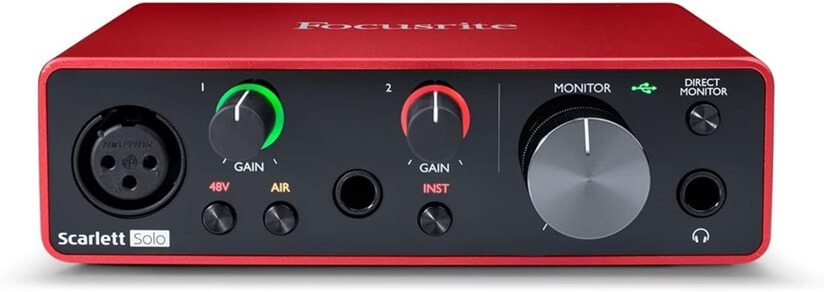
It has a special microphone input that makes your voice sound really clear. You can also plug in your guitar or bass without worrying about the sound getting bad. The recordings you make with it will sound professional because of its special technology.
You can even connect it to your speakers without any issues. The best part is that it comes with some useful software, like Ableton Live Lite, so you can start recording your music right away.
So, if you want a simple, not too expensive, and good-quality gadget to help you record your music, the Focusrite Scarlett Solo is the one for you.
Best Features:
- High-quality Scarlett mic preamp for pristine sound quality.
- High-headroom instrument input for recording guitar or bass without clipping or distortion.
- High-performance 24-bit/192kHz AD-DA converters for professional-sounding recordings.
- Balanced outputs for connecting studio monitors with confidence.
- Easy to set up and use, even for beginners.
- Comes with a variety of software tools and plugins, including Ableton Live Lite.
Pros:
- Wide range of features for the price.
- Comes with a variety of software tools and plugins.
Cons:
- Limited I/O options.
2. Behringer Audio Interface for Vocals
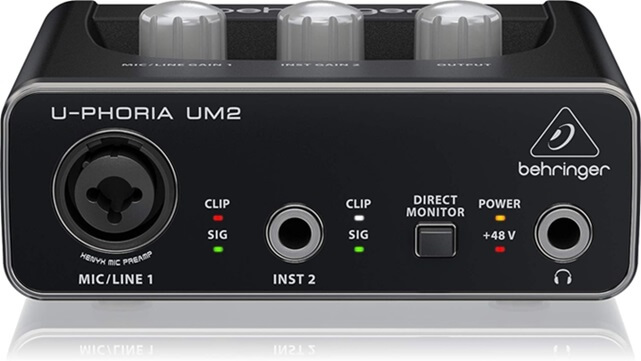
What’s cool is that it comes with Tracktion, a program that helps you make and edit your music. It’s like having a mini music studio on your computer, and you get it for free with the UM2. You can even use it with other music software like Pro Tools, Ableton Live, and Cubase.
This device is easy to use, and you can connect different types of microphones and instruments to it. Plus, you’ll get more than 150 virtual instruments and special effects to play with. Whether you’re new to music or a seasoned musician, the Behringer U-Phoria UM2 is an excellent and affordable choice for recording your music on your computer.
Best Features:
- XENYX Mic Preamp for high-quality recording.
- 48 kHz resolution for professional audio.
- Compatible with popular DAWs.
- Convenient monitoring control.
- Free software and virtual instruments.
Pros:
- Good for beginners and budget-conscious users.
- Quality preamp and audio resolution.
Cons:
- Some issues with Windows 10.
3. M-Audio Audio Interface for Vocals
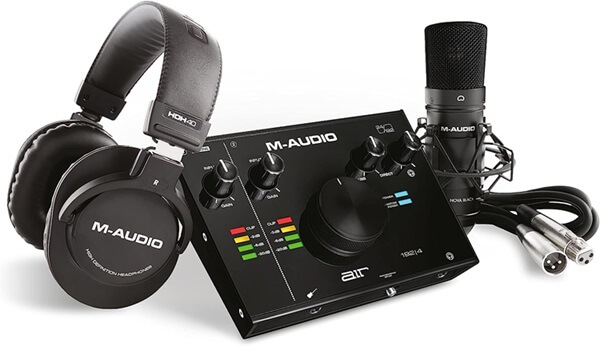
This kit is designed for high-quality recording with fast and low-latency connections, ensuring that your music sounds its best. The package includes a sturdy metal chassis, handy volume control, LED meters, and a knob for zero-latency monitoring.
What’s more, when you purchase this, you’ll get a 2-month subscription to Auto-Tune Unlimited, a famous vocal processor used by top artists. It allows you to enhance your vocal recordings, from gentle pitch correction to the dynamic styles you hear on today’s hit songs.
Whether you’re a beginner or a pro, the M-Audio AIR 192|4 Vocal Studio Pro has everything you need to start recording your music. Get ready to create professional-sounding tracks from the comfort of your home.
Best Features:
- Complete recording package with high-quality components.
- Superior audio quality with low latency.
- Transparent preamps and pristine A/D converters.
- USB-C ready for modern connectivity.
- Diverse and professional software suite included.
Pros:
- All-in-one solution for versatile recording needs.
- Comprehensive software suite for creativity.
Cons:
- Some driver issues(windows).
4. PreSonus Audio Interface for Vocals
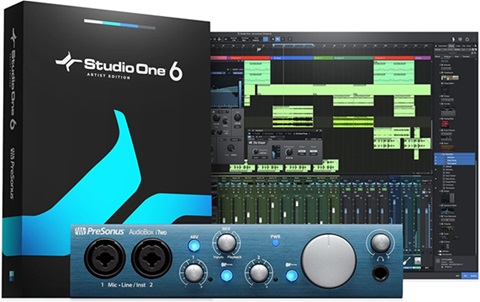
This little box offers high-quality sound, thanks to its top-notch mic preamps. You can use it for vocals, acoustic instruments, and electronic music gear. It’s perfect for those who need a portable recording setup.
If you’re a musician on the move, a podcaster, or anyone looking for a portable and high-quality USB audio interface, the PreSonus AudioBox iTwo is an excellent choice. It’s easy to use and delivers great sound wherever you go.
Best Features:
- Versatile compatibility with Mac, Windows, and iPad.
- High-quality inputs and audio resolution.
- Complete software bundle for recording and production.
- Zero-latency monitoring.
Pros:
- Professional-grade preamps and converters.
- Valuable software included for free.
Cons:
- Low-quality ports.
5. MOTU Audio Interface for Vocals
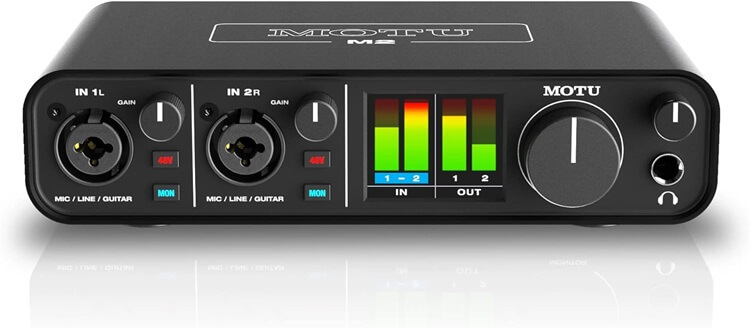
Best Features:
- ESS Sabre32 Ultra DAC for excellent audio quality.
- Ultra-low 2.5 ms latency for real-time monitoring.
- Full-color LCD metering.
- Quality microphone preamps with phantom power.
- Loopback for live streaming.
- USB bus-powered for portability.
Pros:
- Low latency.
- Loopback for streaming.
Cons:
- Window 11 driver issues.
Buying Guide for Best Audio Interface for Vocals
1. Software Compatibility
Make sure that the audio interface you choose is compatible with the recording software you plan to use. Most audio interfaces are compatible with popular recording software such as Ableton Live, GarageBand, and Pro Tools. However, it is always best to check the compatibility list of the audio interface you are interested in.
2. Number of Mic Ports
If you only plan to record one vocal at a time, then an audio interface with two mic ports will be sufficient. However, if you plan to record multiple vocals at the same time, or if you also want to record instruments, then you will need an audio interface with more mic ports.
3. Frequency Response
The frequency response of an audio interface is the range of frequencies that it can accurately capture. For recording vocals, you will want an audio interface with a frequency response that covers the entire human vocal range, which is typically 20 Hz to 20 kHz.
4. Gain Range
The gain range of an audio interface is the amount of amplification it can provide to your signal. For recording vocals, you will want an audio interface with a gain range that is sufficient to boost your microphone signal to a recordable level without introducing clipping.
5. Audio Resolutions
Audio resolution is the number of bits used to represent each audio sample. The higher the audio resolution, the more accurate the digital representation of your audio will be. For recording vocals, you will want an audio interface that supports at least 24-bit audio resolution.
6. Latency
Latency is the delay between the time when you play a note or sing a word and the time when you hear it back through your headphones or speakers. Low latency audio interface is important for monitoring your performance while recording.
7. Drivers
Drivers are software programs that allow your computer to communicate with your audio interface. Make sure that the audio interface you choose has drivers that are available for your operating system.
8. Bit Depth
Bit depth is the number of bits used to represent each audio sample. The higher the bit depth, the more dynamic range your recording will have. For recording vocals, you will want an audio interface with a bit depth of at least 24 bits.
9. Sampling Rate
The sampling rate is the number of times per second that your audio interface samples your audio signal. The higher the sampling rate, the more accurate the digital representation of your audio will be. For recording vocals, you will want an audio interface with a sampling rate of at least 44.1 kHz.
Audio Interface for Vocals – FAQs
Ans: An audio interface is not mandatory for home recordings, but it significantly improves audio quality.
Ans: Latency is the delay between recording and hearing the audio. Low latency is crucial for real-time monitoring while recording.
Ans: Yes, many audio interfaces support instrument inputs, making them versatile for various recording needs.
Ans: Yes, many audio interfaces have multiple inputs, allowing you to connect and record with more than one microphone simultaneously.
Conclusion
The best audio interface for vocals will depend on your individual needs and budget. However, all of the audio interfaces reviewed above are excellent choices for recording vocals.
- The Focusrite Audio Interface for Vocals is the best audio interface for vocals for beginners and budget-minded users.
- The M-Audio Audio Interface for Vocals is the best audio interface for vocals for professional users and users who need multiple XLR inputs or a high sample rate.
- The MOTU Audio Interface for Vocals is the best audio interface for vocals for professionals who want a high-quality interface with USB-C connectivity.
Ultimately, the best way to choose the right audio interface for you is to consider your individual needs and budget. All of the audio interfaces reviewed above are excellent choices for recording vocals, so you can be confident that you are making a good decision no matter which one you choose.

